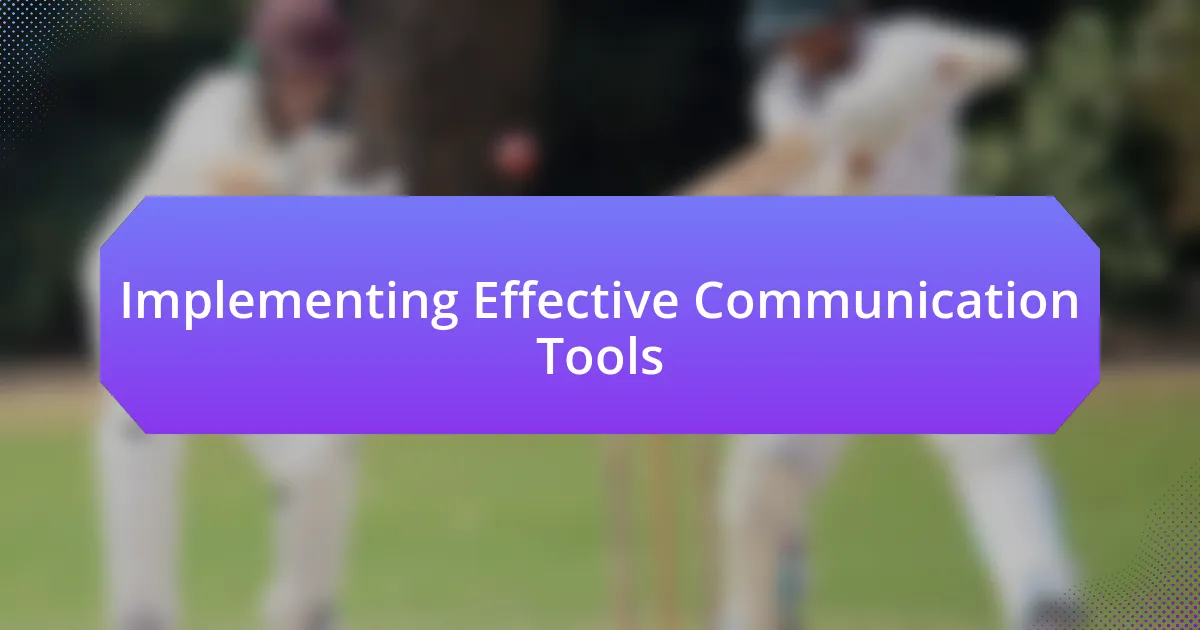Key takeaways:
- Team collaboration fosters innovation and strengthens relationships through diverse perspectives and emotional support.
- Creating a collaborative culture requires open communication, trust-building activities, and celebrating individual contributions.
- Utilizing effective communication tools and regular feedback practices enhances team engagement and accountability.
- Recognizing team successes boosts morale, while measuring collaboration effectiveness helps identify improvement areas and link engagement to productivity.

Understanding Team Collaboration Importance
When I think about the importance of team collaboration, I recall a project that could have easily fallen apart due to differing opinions. Yet, by fostering an open dialogue among team members, we not only resolved conflicts but also generated innovative ideas that none of us would have thought of individually. Isn’t it fascinating how diverse perspectives can transform a challenge into a unique opportunity?
Team collaboration acts like the glue that holds different talents together, creating a synergy that often leads to exceptional outcomes. I vividly remember witnessing participants in a brainstorming session building on each other’s strengths, which resulted in a solution that exceeded our expectations. Have you ever experienced a moment when a group effort felt like pure magic unfolding in real time?
Moreover, the emotional dimension of collaboration is pivotal. During challenging times, I’ve seen how a supportive team can lift one another’s spirits, making setbacks feel less daunting. When we share our struggles and successes, it nurtures trust and camaraderie, essential ingredients for any successful team. Don’t you agree that when we collaborate effectively, we not only achieve our goals but also strengthen our relationships?

Creating a Collaborative Team Culture
Creating a Collaborative Team Culture
Building a collaborative team culture begins with fostering trust and open communication. I recall a time when I initiated regular check-in meetings purely to share updates and challenges. These sessions quickly evolved into a safe space where everyone felt comfortable voicing their thoughts. The way team members began to support one another was remarkable; it felt like creating a little community within our work environment.
- Prioritize open dialogue where everyone can express opinions.
- Celebrate small wins to reinforce teamwork.
- Encourage constructive feedback to help individuals grow.
- Organize team-building activities that reflect shared values.
- Show vulnerability as a leader to inspire authenticity and connection.
When team members sense their voices matter, collaboration flourishes. I observed this firsthand when we adopted a practice where each team member shared an idea or concern during feedback sessions. What amazed me was how the atmosphere shifted, and I felt a palpable sense of camaraderie. It became clear that people were not just participating; they were genuinely invested in each other’s success.

Implementing Effective Communication Tools
Implementing the right communication tools is crucial for enhancing collaboration within a team. I’ve found that utilizing platforms like Slack or Microsoft Teams streamlines conversation and makes it easier to keep track of important discussions. In one of my past roles, we transitioned to using these tools, which significantly reduced our reliance on lengthy email threads and led to quicker decision-making processes.
Moreover, video conferencing tools such as Zoom have proven invaluable, especially for remote teams. I remember a time when we struggled to engage everyone during virtual meetings. By incorporating breakout rooms, we allowed team members to discuss topics in smaller groups, which drastically improved participation. It was exciting to see how energized people became when they could interact more intimately, and it fostered deeper connections.
Lastly, project management tools like Trello or Asana can help visualize tasks and deadlines. I often share my screen to walk through our progress and challenges, which brings clarity to what everyone is working on. This kind of transparency not only helps in accountability but also instills a sense of shared ownership among team members. In my experience, when everyone knows the goals and their roles in achieving them, collaboration is not just effective; it’s empowering.
| Tool | Key Benefit |
|---|---|
| Slack / Microsoft Teams | Streamlined communication; reduces email overload |
| Zoom | Facilitates engagement through breakout rooms |
| Trello / Asana | Visual task management; promotes accountability |

Encouraging Open Feedback Practices
Encouraging open feedback practices is essential for building trust within a team. I recall a project where we implemented a “feedback circle” after every major milestone. This space allowed team members to share thoughts and critiques freely. The atmosphere was sometimes tense, but I found that pushing through those uncomfortable moments led to breakthroughs in our collaboration.
One technique that has worked well for me is creating a “feedback moment” in our weekly meetings. I often ask open-ended questions like, “What’s one thing we can improve on as a team?” This not only shows my commitment to ongoing improvement but also invites everyone to participate. I’ve seen shy teammates come forward with valuable insights, and their contributions have led to meaningful changes in our processes, enhancing the overall team dynamic.
Additionally, I emphasize the importance of timely feedback. In my experience, waiting too long to discuss issues can lead to frustration and resentment. When I addressed an issue right after a meeting, it not only cleared the air but reaffirmed that each voice mattered. This sense of urgency in feedback cultivates a culture of open communication, where everyone feels empowered to express themselves and contribute to the team’s growth.

Recognizing and Celebrating Team Success
Recognizing and celebrating team success can significantly boost morale and motivation. I remember when my team completed a challenging project ahead of schedule; we celebrated with a simple, yet heartfelt gathering. I noticed how the excitement in the room not only validated our hard work but also ignited a renewed sense of enthusiasm for upcoming projects. Isn’t it amazing how a little acknowledgment can spark so much energy?
One method I’ve found effective is sending out personalized notes of appreciation after significant achievements. Each note reflects my genuine gratitude for individual contributions. The impact of a hand-written acknowledgment is often underestimated, but it’s those small gestures that make the team feel valued and connected. Have you ever received a note that turned your day around? I know I have, and I strive to create that same positive experience for my team.
Moreover, incorporating a “shout-out” segment into our team meetings has become a powerful ritual. Each week, we take a moment to recognize teammates who went above and beyond. This practice not only strengthens our bonds but also fosters a culture of support and appreciation. When everyone shares their wins, it creates an uplifting atmosphere where we celebrate collective achievements and support one another’s growth. It’s remarkable how these simple acts of recognition can transform not just individual motivation but the entire team’s dynamic.

Measuring Team Collaboration Effectiveness
Measuring the effectiveness of team collaboration is essential to understanding how well we’re working together. In my experience, utilizing surveys to gather feedback can provide invaluable insights. For instance, I once conducted a team survey and discovered that while some members felt engaged, others were hesitant to share their ideas openly. This discrepancy opened a crucial dialogue, revealing underlying issues that needed addressing.
Another approach I’ve found helpful is tracking project outcomes against collaborative efforts. After finishing a project where collaboration was key, I took the time to review whether our joint efforts translated into enhanced results. Interestingly, I noticed that teams that prioritized regular check-ins and brainstorming sessions produced higher-quality deliverables. This correlation underscores the importance of consistent communication, don’t you think?
Lastly, I’ve experimented with collaboration tools that track engagement levels within the team. By analyzing the frequency of team interactions on platforms like Slack or project management software, I could measure how often team members were contributing. Each time I reviewed these metrics, it became clearer how engagement levels impacted our overall productivity. It’s fascinating to see the direct link between collaboration and outcomes, isn’t it?














